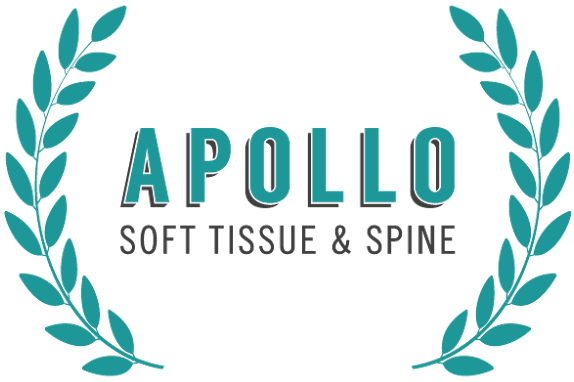Shockwave therapy has emerged as a promising treatment option for various musculoskeletal conditions and injuries. Understanding its definition, historical context, and evolution provides valuable insight into its efficacy and applications.
What is shockwave therapy? Shockwave therapy uses acoustic waves to stimulate healing and alleviate pain in musculoskeletal tissues. These high-energy pulses are applied directly to the affected area, triggering a cascade of biological responses that promote tissue regeneration and repair. This non-invasive treatment modality has gained popularity for its ability to address conditions such as plantar fasciitis, tendonitis, and calcific tendonitis, offering patients an alternative to surgery or medication.
The roots of shockwave therapy can be traced back to the 1960s, when researchers began exploring the use of acoustic waves for medical purposes. Initially developed to break down kidney stones non-invasively, shockwave technology gradually found its way into orthopedic and sports medicine. The early applications focused primarily on lithotripsy, but as the understanding of shockwave mechanics deepened, its therapeutic potential in treating soft tissue injuries became evident.
Evolution of Shockwave Therapy
Shockwave therapy, including extracorporeal shockwave therapy, has advanced significantly in technology and treatment protocols. With improved precision and efficacy in focused and radial shockwave devices, it’s tailored to individual patient needs. Research explores new applications like wound healing and erectile dysfunction, positioning shockwave therapy as integral in modern rehabilitation and pain management.
How Shockwave Therapy Works
Mechanism of Action
Shockwave therapy operates on the principle of acoustic waves transmitting energy to targeted tissues. It utilizes high-energy pulses, promoting healing and pain relief in musculoskeletal structures.
When these waves interact with the body, they induce a cascade of biological responses that helps healing process, pain relief, and stimulate blood flow in musculoskeletal tissues. The mechanical force generated by shockwaves stimulates cellular activity, increasing blood circulation and triggering the release of growth factors, facilitating tissue repair. Understanding how shockwave therapy works is essential to grasp its efficacy and mechanisms of action.
Types of Shockwaves
Radial Shockwaves
Radial shockwaves spread energy outward from the device, treating larger areas and superficial musculoskeletal conditions such as tendinopathies and trigger points. These devices offer versatility in adjusting treatment depth and intensity to meet diverse patient needs. Moreover, radial shockwave therapy, including extracorporeal shock wave therapy, has been found to enhance blood flow in treated tissues, aiding the healing process.
Focused Shockwaves
Focused shockwaves are a targeted treatment method for conditions like plantar fasciitis, tendon issues, and bone fractures. By concentrating energy at precise locations, they optimize therapy while minimizing impact on surrounding tissues.
Scientific Principles Behind the Therapy
Shockwave therapy utilizes acoustic waves to stimulate cellular responses in the body, triggering the release of growth factors, enhancing tissue repair mechanisms, and modulating inflammation. Additionally, it promotes angiogenesis, forming new blood vessels that accelerate healing by improving oxygen and nutrient delivery to injured tissues. These principles make shockwave therapy a non-invasive and effective treatment option for diverse musculoskeletal conditions.
Advantages and Benefits of Shockwave Therapy
Shockwave therapy offers numerous advantages for treating musculoskeletal conditions. From its non-invasive nature to its ability to reduce pain and speed up recovery, it’s become a popular treatment option.
Non-Invasive Nature
Shockwave therapy stands out for being non-invasive. Unlike surgery, it doesn’t require incisions or anesthesia. Patients can undergo treatment as outpatients and return to normal activities quickly, reducing the risk of complications.
Speed of Recovery
Shockwave therapy accelerates healing by stimulating cellular responses and tissue regeneration. Patients often experience pain relief and improved function after just a few sessions. This faster recovery time means less downtime and a quicker return to daily life.
Minimal Side Effects
Shockwave therapy offers a safer alternative to surgery and medication, with minimal side effects like temporary discomfort or soreness. Unlike traditional treatments, it poses fewer risks and is well-tolerated, making it an attractive option for managing musculoskeletal issues.
What is shockwave therapy and how does it work? These benefits make shockwave therapy an appealing choice for patients seeking effective, low-risk treatment options for their musculoskeletal conditions.
Understanding the Treatment Process
Navigating the treatment process of shockwave therapy involves understanding key aspects such as session duration, frequency of sessions, and pre and post-treatment recommendations. By adhering to these guidelines, patients can optimize the effectiveness of their treatment and enhance their overall recovery experience.
Session Duration
The duration of a shockwave therapy session typically varies depending on the specific condition being treated and the protocol established by the healthcare provider. On average, a single session of shockwave therapy lasts between 15 to 30 minutes.
During this time, the healthcare provider administers the shockwave therapy using a handheld device, targeting the affected area with precise application techniques. While the treatment is relatively brief, patients may undergo multiple sessions over a prescribed period to achieve optimal therapeutic outcomes.
Frequency of Sessions
The frequency of shockwave therapy sessions is determined by several factors, including the severity of the condition, the individual’s response to treatment, and the clinician’s recommendations. In most cases, patients undergo shockwave therapy sessions once a week for a series of several weeks, often in conjunction with complementary physical therapy sessions. This interval allows the body to respond to the treatment and initiate healing between sessions. As patients progress through their treatment plan, the frequency of sessions may be adjusted based on their clinical progress and therapeutic goals.
Pre and Post-Treatment Recommendations
Before shockwave therapy, patients should avoid anti-inflammatory drugs and blood thinners, stay hydrated, and refrain from intense physical activity. After treatment, resting, avoiding strenuous activities, applying ice packs, and gentle stretching can help reduce soreness and aid recovery.
Choosing the Right Provider
Selecting the right provider for shockwave therapy is crucial to ensuring optimal treatment outcomes and a positive patient experience, especially when considering sports medicine specialists. Several factors contribute to identifying a reputable and skilled provider, including accreditation and certification, patient reviews and testimonials, and consultation and evaluation. When seeking shockwave treatment, it’s essential to consider the provider’s accreditation and certification.
Accreditation and Certification
When choosing a shockwave therapy provider, ensure they’re accredited and certified. Look for practitioners trained and certified in administering shockwave therapy from recognized institutions. Accredited providers follow strict standards and undergo thorough training for safe and effective treatments, instilling confidence in their expertise.
Patient Reviews and Testimonials
Patient reviews and testimonials provide insight into shockwave therapy providers’ quality of care. Researching online feedback helps gauge patient satisfaction and treatment experiences. Positive reviews signal reputable providers with successful outcomes and compassionate care, while negative feedback may raise concerns about professionalism and treatment efficacy.
Consultation and Evaluation Process
The consultation and evaluation process is pivotal in determining the suitability of shockwave therapy and establishing rapport with the provider. During the initial consultation, the provider should thoroughly evaluate the patient’s medical history, current symptoms, and treatment goals. A comprehensive physical examination may also assess the underlying condition and identify any contraindications to shockwave therapy.
Summary
Shockwave therapy is a non-invasive and promising treatment for various musculoskeletal conditions. With its evolution and advancements, it offers advantages like minimal side effects and faster recovery times. Choosing a qualified provider and understanding the treatment process are key to maximizing its benefits. Shockwave therapy stands as a forefront option in modern rehabilitation and pain management.




